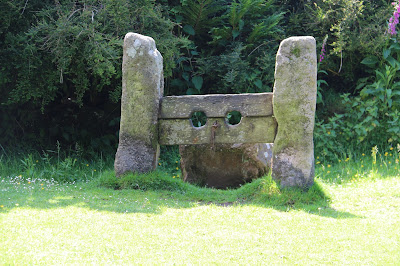 |
| Our route, starting and ending in the pretty village of Belstone, and walking up one side of the River Taw and down the other. About 6.5 miles of reasonably strenuous going. |
 |
| The River Taw tumbling over granite rocks. |
 |
| It's a good year for foxgloves. Lots and lots of them around, adding splashes of colour in the hedgerows and along our paths. |
 |
| And this view is in the opposite direction, looking north towards Belstone Common. |
 |
| Small Heath butterfly. Not a rare species but very difficult to get a good photograph of. They are flighty little devils. |
 |
| A female Wheatear. A corruption of White Rear, the accuracy of which becomes obvious when they fly away from you and you can see their white rumps. |
 |
| There's nothing like a refreshing drink after a long walk. And we didn't just walk away leaving someone else to clear up after us, we were just doing what the barmaid told us to do. |







No comments:
Post a Comment